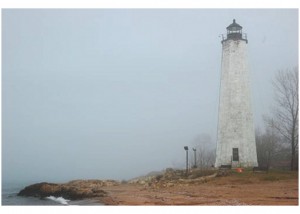 If you have been looking for scrimshaw patterns, we will be hosting several of them at scrimshaw.com. It can be especially daunting for the beginner to find a pattern or template to scrimshaw, and a great place to start is the iconic lighthouse.
If you have been looking for scrimshaw patterns, we will be hosting several of them at scrimshaw.com. It can be especially daunting for the beginner to find a pattern or template to scrimshaw, and a great place to start is the iconic lighthouse.
The lighthouse is an historic part of the maritime landscape from as far back as 260 B.C. with the lighthouse of Alexandria. Warning sailors of rocky shores, guiding them through fog as well as a beacon of civilization, lighthouses served the maritime community throughout history. Most modern lighthouses operate automatically. Some lighthouses are also run as bed and breakfasts or vacation houses (see http://lighthouse.cc/links/overnight.html). The only time a lighthouse can be less than romantic is when the fog rolls in, and the foghorn starts to blow. Those who used to run lighthouses say they would get used to it, talking in between the soundings, and even sleeping through a foggy night!
There is a non-profit organization, the Beacon Preservation, Inc. which is dedicated to the preservation of lighthouses and their environments for educational, cultural, recreational, and historical preservation purposes. Their mission is to ensure that communities, civic organizations, and educational and research institutions are able to enjoy access to these important icons of nautical history. You can find out more about them at http://www.beaconpreservation.org/content/publish/default.shtml.
The lighthouse pictured is in New Haven, CT – Lighthouse Point Beach – January, 2007(photo credit: Chris Amelung –
http://www.flickr.com/photos/amelungc/355355109/sizes/l/in/photostream/(link) CC Creative Commons Attribution License. Chris’ site is
http://www.flickr.com/photos/amelungc/
Clicking on the Lighthouse-Template will bring up a pdf which you can download and print out. There will be several sizes of the traced template varying from 1/4″ high to a 2″x3″ with the background. You can use these templates on anything from piano key ivory (often used as bookmarks) to lightswitch plates or other materials.
Cut out the size that fits your material and secure it in place with tape.
Using a sharp tool, you can pierce the paper and make a dot on your ivory, making dots every 16th of an inch or so, creating a “dot-to-dot” (kids will sometimes use the school’s compasses – the type used to make circles, not to find true north) to do this.
Once you have gotten most of the template pierced, remove the paper.
You can see the dots easier if you fill them in by wiping oil paint across the surface then wiping it away, this will leave the paint in the impressions you created.
From here, you can continue putting stippled dots between the dots already there, or scribe from dot-to-dot to get the initial picture. Fill in a small area with dots or scribed lines, then coat and wipe the area with oil paint (or India ink). Using the large original picture as a guide you can then create the shadows, or get creative and add a different shoreline, add a ship in the harbor, or anything else you desire.
Here’s a link to another picture of the lighthouse from Tony Fischer Photography
Write to us at “questions@scrimshaw.com” and let us know what you are looking for, we’ll be glad to get you started.